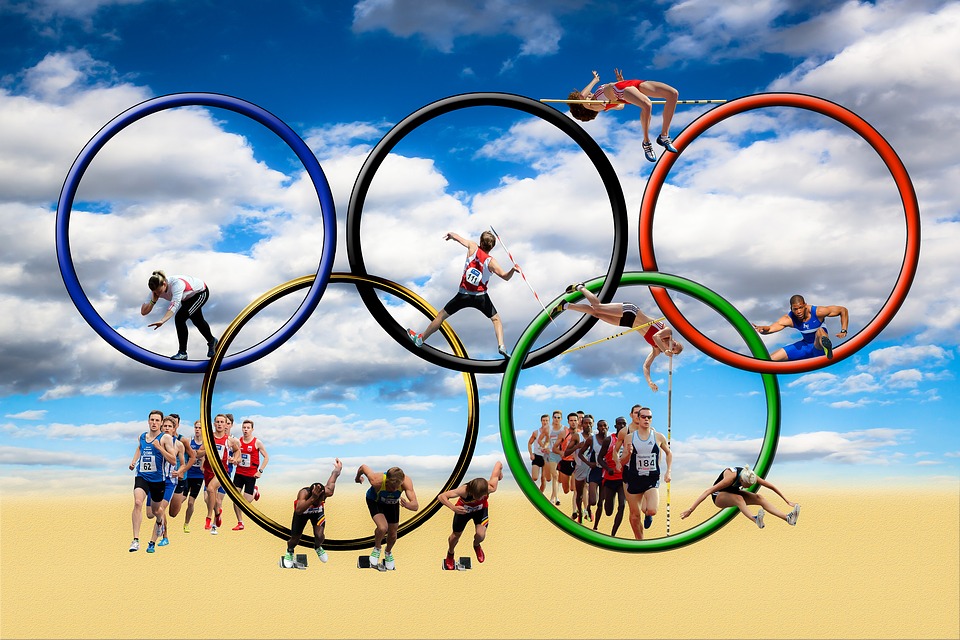
The Rio Olympic games 2016 are fast approaching and this year both the Olympic and Paralympic games are set to make full use of the IoT and Smart technologies.
Here are the 10 most innovative technologies that will be used both on and off the track at the Rio Olympics.#
1. BBC Virtual Reality Service
The BBC’s experimental Virtual Reality Service will broadcast the Olympics to UK audiences in a 360-degree video format. This VR-ready footage will be broadcast daily during the games, accounting to a total of around 100 hours.
Viewers will be able to take advantage of this format, using either the Samsung Gear VR or Google cardboard. It will also be accessible for viewers on the BBC Sport 360 trial app, available on Android and IOS.
Justin Barritt, Executive Product Manager for BBC said; “The BBC delivered the first truly digital Olympics for London 2012 and we’ve continued to develop and improve our digital service ever since. Now, we’re pushing the boundaries once again to bring people closer to the action than ever before. Not everyone can make it to Rio to cheer on Team GB so we’re looking forward to giving sport fans the next best thing.”
 bbc 360 degree.jpg)
2: Augmented Reality Glasses
Solo’s Augmented Reality Glasses were used by the U.S Olympic cycling team to train in the run-up to the Games. The glasses are able to display important information such as speed, heart rate, and distance travelled.
Solo’s Smart Cycling glasses will be supporting the U.S team in the Olympic Games, having said that they have been working with the team for over year developing the product.
 AR glasses.jpg)
3: Samsung’s Gear Virtual Reality Headsets
Samsung have created VR headsets especially for the Games, supporting 360 degree viewing.
The VR headsets can be used by viewers whilst using the BBC Sport 360 App. Paired also with the use of mobile phone viewers will get coverage of both the opening and closing ceremonies, with the addition of one game per day.
 VR headset.jpg)
4. Wearables
Wearables deplyed at the Games extend past the trusted Fitbit. Used by the US boxing team, the Hysko sensor is worn under boxer gloves and tracks the speed, intensity and type of every punch thrown – all in real-time.
There is also the Hexoskin smart shirt. Promoted by South African track and field star Willem Coertzen, the biometric shirt combines three types of sensors measuring biometrics such as heart rate, breathing, pace and sleeping habits.
The smart shirt is one of the few on the market that measures electrical activity of the heart, using an electrocardiogram. Information gathered by the Hexoskin smart shirt can be immediately synced to a phone or tablet via Bluetooth and compared with data from the past.
 wearables.jpg)
5. Under water digital counters
The underwater counters will be used to notify swimmers of the laps covered, whilst in the pool.
These digital counters are designed to replace the usual placards, denoting the lap number which is held up by officials.
The underwater counters will be used in both the 800 meter and 1,500 meter freestyle games.
 underwater counters.jpg)
6. Visa NFC mobile payment ring
The newest technology powers mobile payment services such as Apple Pay, Google Play and Samsung Pay.
The Visa payment ring will be given to all team Visa athletes, which includes a group of 45 Olympic hopefuls from around the world. The NFC-enabled ring allows athletes to make payments simply by the tap of the ring.
 Visa ring.jpg)
7. Cooling hoods
The Cooling hoods are designed by Sportswear brand Nike to allow athletes to keep a cool head whilst participating in games.
The hoods are designed with a multi-layered mask-like structure with leak-proof inner layers to retain cold water, with a structural frame around the eyes to maintain a secure fit.
Track and Field athlete Ashton Eaton is known to wear a cooling hood between events to reduce heat around his face and maximize his recovery.
 cooling hoods.jpeg)
8. GPS Canoes and Sailboats
The GPS is said to be attached to every Canoe and Sailboat at the Rio Olympics 2016, with the technology helping viewers and spectators follow the action on big screens. Spectators will be shown details about speed, direction, and distance to finish, among other stats.
In order to efficiently facilitate the process and stop the risk of athlete disruption in preparation, all boats will have a holder fixed on the deck of the boat in advance of the races.
 GPS.png)
9. Google Street Views
The street views tech, created by Google, allows viewers to see the Olympics from the eyes of the athletes. 360 degree images let users see a panoramic view of all the venues.
Adriana Garcia, Communications director of Rio Olympic Games 2016 said; “Street View gives users a unique chance to see the venues from the same perspective that athletes will have during the Games.”
 google street view.jpg)
10. Wind tunnel tape
Another Nike creation is the AeroSwift Tape. Developed by testing movement around the body in wind tunnels, it essentially streamlines the body in Olympic Games like track and field racing.
The tape is designed using wind tunnel testing on mannequins, the same shape and size as the company’s various track and field athletes.
 wind tunnel tape.jpg)






